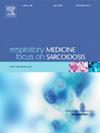Age-related changes of inflammatory cytokines in nasal secretion of patients with chronic rhinosinusitis
IF 3.5
3区 医学
Q2 CARDIAC & CARDIOVASCULAR SYSTEMS
引用次数: 0
Abstract
Background
Patient-specific factors are highly involved in chronic rhinosinusitis (CRS) 's course and treatment response. However, the effects of aging on the pathophysiology of CRS remain unclear. This study aimed to evaluate the age-related changes in nasal secretion inflammatory characteristics in patients with CRS.
Methods
The levels of 12 inflammatory cytokines in nasal mucus samples obtained from 31 patients diagnosed with CRS were measured via enzyme-linked immunosorbent assays. The associations between age and inflammatory cytokine levels were determined by Spearman correlation coefficient analysis. In addition, the relationships between inflammatory markers and demographic evaluation variables such as the Sino-Nasal Outcome Test-22 (SNOT-22) score and disease duration were examined to determine whether the levels of inflammatory cytokines influence the assessment of disease severity in CRS patients.
Results
Compared to younger patients with CRS, aged CRS patients exhibited a significant reduction in IL-6 levels (p < 0.01), while levels of IL-10 (p < 0.01), IL-13 (p < 0.01), and Eotaxin (p < 0.05) were markedly elevated. Notably, the Eotaxin level demonstrated a significant decline with age among CRS patients younger than 60 years old (r = −0.79, p < 0.001). Furthermore, the increased mucus TNF-α level was significantly correlated with the prolongation of the disease course in aged CRS patients, with a clinically relevant difference of 7.78 months (p < 0.05).
Conclusion
We have revealed age-specific changes in the inflammatory characteristics of CRS patients, providing new and interesting findings for the development of personalized treatment methods tailored to this high-risk population.
慢性鼻窦炎患者鼻分泌物炎症因子的年龄相关性变化
背景:慢性鼻窦炎(CRS)与患者特异性因素密切相关。疗程和治疗反应。然而,衰老对CRS病理生理的影响尚不清楚。本研究旨在评估CRS患者鼻分泌物炎症特征的年龄相关性变化。方法采用酶联免疫吸附法检测31例CRS患者鼻黏液中12种炎性细胞因子的水平。通过Spearman相关系数分析确定年龄与炎症细胞因子水平的相关性。此外,研究炎症标志物与人口统计学评价变量(如Sino-Nasal Outcome Test-22 (SNOT-22)评分和疾病持续时间)之间的关系,以确定炎症细胞因子水平是否影响CRS患者疾病严重程度的评估。结果与年轻CRS患者相比,老年CRS患者IL-6水平显著降低(p <;0.01), IL-10水平(p <;0.01), IL-13 (p <;0.01), Eotaxin (p <;0.05)显著升高。值得注意的是,年龄小于60岁的CRS患者Eotaxin水平随年龄明显下降(r = - 0.79, p <;0.001)。此外,老年CRS患者黏液TNF-α水平升高与病程延长显著相关,临床相关差异为7.78个月(p <;0.05)。结论我们揭示了CRS患者炎症特征的年龄特异性变化,为开发针对这一高危人群的个性化治疗方法提供了新的有趣的发现。
本文章由计算机程序翻译,如有差异,请以英文原文为准。
求助全文
约1分钟内获得全文
求助全文
来源期刊

Respiratory medicine
医学-呼吸系统
CiteScore
7.50
自引率
0.00%
发文量
199
审稿时长
38 days
期刊介绍:
Respiratory Medicine is an internationally-renowned journal devoted to the rapid publication of clinically-relevant respiratory medicine research. It combines cutting-edge original research with state-of-the-art reviews dealing with all aspects of respiratory diseases and therapeutic interventions. Topics include adult and paediatric medicine, epidemiology, immunology and cell biology, physiology, occupational disorders, and the role of allergens and pollutants.
Respiratory Medicine is increasingly the journal of choice for publication of phased trial work, commenting on effectiveness, dosage and methods of action.
 求助内容:
求助内容: 应助结果提醒方式:
应助结果提醒方式:


